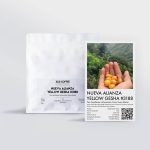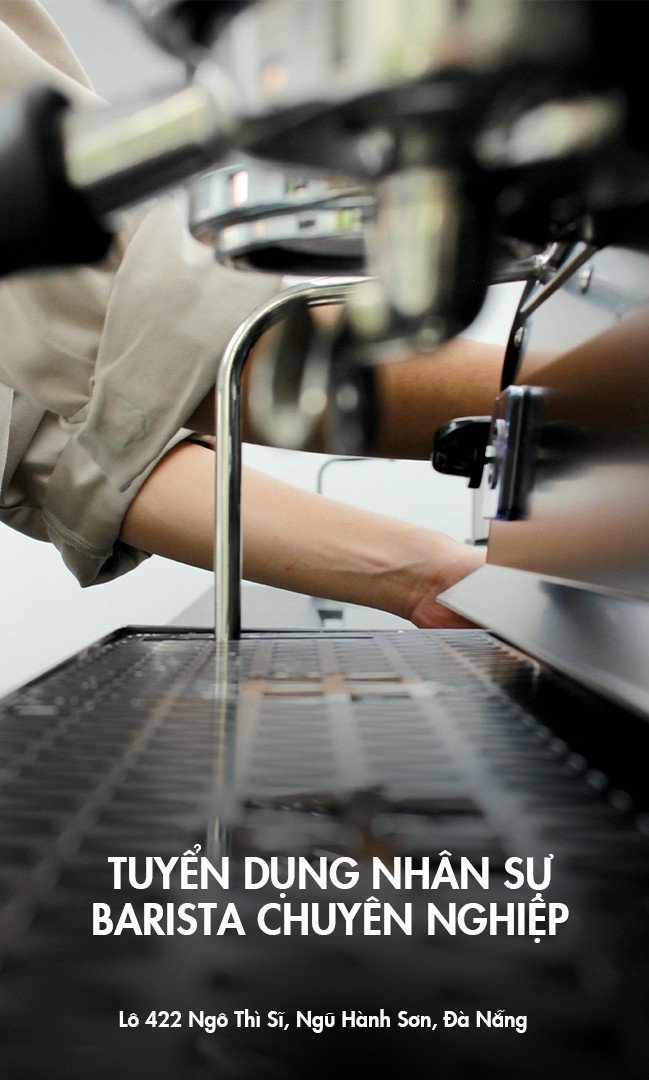20 YEARS
A JOURNEY TO EMBRACE COFFEE BEANS
2019 marks the 20th anniversary of the foundation and development of the most prestigious competition for the coffee industry: The Cup of Excellence. It is a long journey of love and enthusiasm the CoE professionals have gone.
Coffee is the eternal story of mankind. From the intellectual workers to the workers, coffee is a spice for a more exciting working and living life.
With everlasting and authentic value, coffee increasingly plays an important role in human life. But not everyone could be ready to cherish its name and dedicate all life to working for coffee.
In the journey of more than 2 decades, The Cup of Excellence has accompanied farmers and coffee lovers around the world to evaluate, display and select the best beans – creating a Great collection between people and nature. How long was the journey of 20 years?
FOUNDATIONS
It was largely Spindler’s task to oversee and steer CoE through the choppy waters of its beginnings. For the first five years after founding the CoE organizational body in 2002, Spindler ran ACE from a spare bedroom in her Montana home when not in countries of coffee’s origin to navigate bureaucracies, oversee the fast-paced shipping of samples, and stand her ground in rooms full of men who wanted adjustments to rules that would favor their regions’ coffees.
Today, from a spacious facility in a high rise in Northwest Portland, Oregon, ACE’s staff of eight spreads out with rooms for meetings and classes, a state-of-the-art cupping lab and a view clear across the Willamette River.
“I don’t think it’s ever done,” Spindler, who now serves as an executive consultant for ACE and CoE, told DCN in Brazil. “The goal for Cup of Excellence, the mission statement, is to discover the highest quality and reward the farmers. That’s easy to say, but that means you’re changing an infrastructure that has been very resistant to change.”
A SENSORY EVOLUTION
Even around the cupping tables in 1999, there was resistance of a kind. George Howell, the founder of George Howell Coffee, oversaw many of those cupping tables in the early years of the CoE.
Howell was the coffee quality expert stationed in Brazil in the late 1990s for the International Coffee Organization-led Gourmet Coffee Project, which was designed to identify and separate coffees of higher quality so that its producers could be commensurately compensated.
When that effort concluded with a report but no forward-moving action plan, Spindler, Howell and others decided to create the CoE as a means of actually achieving the goals laid out by the Gourmet Coffee Project.
“The whole point of this exercise was to find ways to produce higher quality and higher prices simultaneously,” said Howell. “I hate this idea that I’m going to write a whole thesis on it and hand it to you and say ‘do what you will with it.’ To my mind, that’s no answer at all. So that’s why we came up with the auction and the competition.”
Through his experience, Howell already knew how to establish protocols and parameters for an effective competition, although bringing in a variety of judges and calibrating older coffee professionals with younger ones presented its own set of challenges.
Howell would overhear hushed discussions among the old guard around the cupping table about what was wrong with certain coffees, and had to urge them simply to drop it, move on, and stick to a focus on positives, not negatives.
“It absolutely wasn’t about defects,” said Howell. “It was from the start a search for gems, for the best. It was a search for clean and sweet.”
Calibration for judging the competition in the earliest years was a relatively brief exercise that, by 2002, had become far more sophisticated, according to Howell. Today it involves a series of focused cuppings with a variety of coffees that range from excellent to distinctly flawed, potentially with one coffee cunningly repeated.
Howell’s revisions to the cupping form have also helped hone the evaluation process, particularly in distinguishing between the intensity and the quality of specific attributes.
“For the first time that I know of, it was no longer the intensity of the acidity or the strength of the body that counted,” said Howell. “You had a place to mark that, because that was very important as feedback for farmers and for yourself, but you also had to judge the acidity and the body by their quality, which was different. For me, acidity is like illumination; it can be a harsh light, and it can be a warm light. In specialty, we’re still in an ongoing search for the vocabulary for what makes coffee great. That’s not ended yet.”
Juries in the earlier years were composed mostly of cuppers from the United States, Europe and Japan. Australians soon joined, and now representatives from South Korea and China are also taking part. Cropster-enabled Probatino roasters now keep the cupping roast profiles stable; lighting, temperature, humidity, water chemistry, and more are now controlled where possible. Judges in El Salvador, Honduras, and soon also Guatemala will be using digital cupping forms on tablets to score the coffees.
While tools and standards of the trade have changed, so have the coffees that are landing in the top 10s. This has been the result not only of the rising objective quality of coffees produced through different methods, but also of the shifting mentalities among judges. In Brazil, in 1999 and for many years that followed, Howell said it was almost entirely pulped naturals that initially took the top spots.
“Occasionally you’d see a natural come in, but in those days, the juries were not ready for that,” said Howell. “Once naturals became more popular they were brought into it as a separate competition for quite a few years. I, for one, was not ready for it back in those early days. On the international market, [natural process] was almost universally regarded as something of poor quality. We were looking for more evenness, more predictability. It just wasn’t time yet.”
“I’m very impressed by [this year’s] jury and how it’s able to deal with each type of coffee,” said Howell. “I felt it was extraordinarily even-handed, and that was always a big concern of mine because you have the naturals, and now the anaerobic, that are very powerful flavors on the same table. And yet [this year’s judges] are also able to distinguish more subtle coffees, and give them a place.”
CHANGING PRACTICES AND PERCEPTIONS
Brazil was an ideal country in which to launch the initial contest. Its coffee industry was well established; it had the resources and organizational support; and yet within the global specialty coffee marketplace of the 1990s, its reputation for quality was relatively low.
The effect CoE has had on on the latter factor has been transformative. DCN spoke with Fazenda Samambaia owner, SanCoffee President and Brazilian Specialty Coffee Association (BSCA) Executive Board Member Henrique Cambraia about the changes he has witnessed in Brazil since the advent of CoE.
“Cup of Excellence is a really important motivational tool for us,” Cambraia said. “It really has changed our lives, considering the focus on quality and purpose into the farm.
Cambraia’s family has been growing coffee in the Santo Antônio do Amparo area since 1896. He founded the cooperative Santo Antonio Estates Coffee, later renamed SanCoffee, in 2000, in part because farmers in the area were so inspired by the opportunities presented by CoE. SanCoffee grades, mills, stores, markets and exports a membership of roughly 20 mid-sized farms.
“We can see in the history from Cup of Excellence, we have regions like Mantiquera de Minas, it was a hidden treasure in Brazil,” said Cambraia. “Even the Arapongas areas in the eastern part of Minas Gerais, it used to be known for phenolic tastes, and nowadays they do beautiful, bright, jasmine coffees in Brazil. All these regions were discovered or highlighted because of Cup of Excellence. The impact Cup of Excellence caused in many lives of Brazilian growers is very solid; it’s huge.”
The contest has continued to push its entry qualifications upward. In 2019, the minimum score for a coffee to pass through into the auction was 87, one point higher than last year. Only 30 coffees are now admitted into the main CoE auction, down from 40. The stakes are trending higher, too. The highest price paid for a coffee in the auction in 1999 was $1.72 per pound. In last year’s CoE auction in Costa Rica, the winning lot sold for a whopping $300.09 per pound.
“At 20 years, you’re looking at where the next 20 is going to go and I think, as Susie’s always said, our mission is really simple, it’s very straightforward,” said Daniel. “It really should stand the test of time, and it obviously has until now. I think for us, remaining relevant means listening to the industry, listening to specialty and buyers and what they say.”














